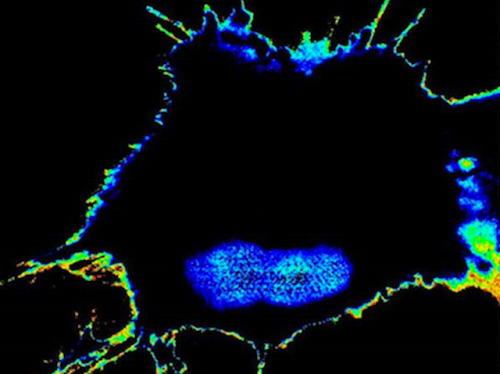
Seeing Potential
Metastasis, the ability of cancerous cells to spread to other organs, is the reason why cancer is so deadly, and an enduring puzzle for cancer research. Yet not all tumours metastasise, and not all cells in aggressive cancers develop this most dangerous property, so being able to identify and monitor high-risk cells would be a significant breakthrough. To that aim, researchers have recently developed a new imaging technique, to spot cells with a high metastatic potential. By comparing healthy and cancerous tissues, they identified a key marker of metastasis, the modification of a signalling protein known as GIV/Girdin, then developed biosensors to detect it. In the breast cancer cell here, green, orange and red fluorescence indicates the presence of modified Girdin, and a high metastatic potential. Though still far from clinical applications, this type of sensor could eventually measure the risk of metastasis for patients, helping to personalise their treatment.
Written by Emmnauelle Briolat
- Image by UC San Diego Health
- Department of Medicine, University of California at San Diego, George Palade Labs, La Jolla, CA, USA
- Image copyright held by the original authors
- Research published in iScience, December 2018
You can also follow BPoD on Instagram, Twitter and Facebook
Archive link





Комментариев нет:
Отправить комментарий